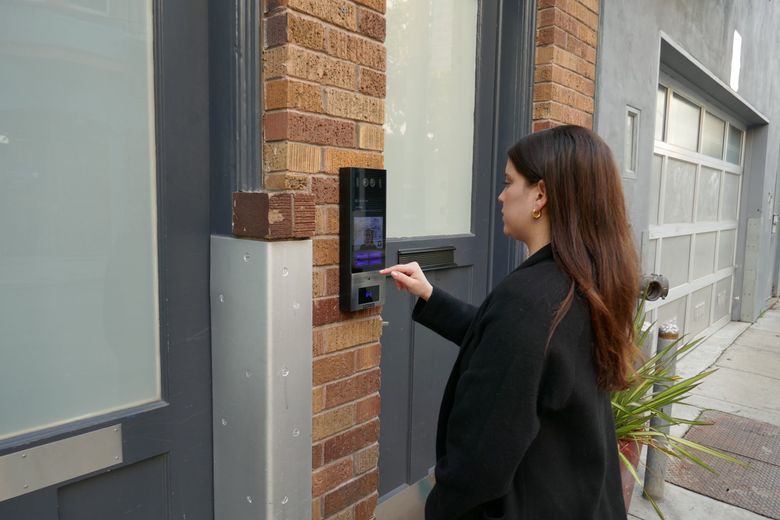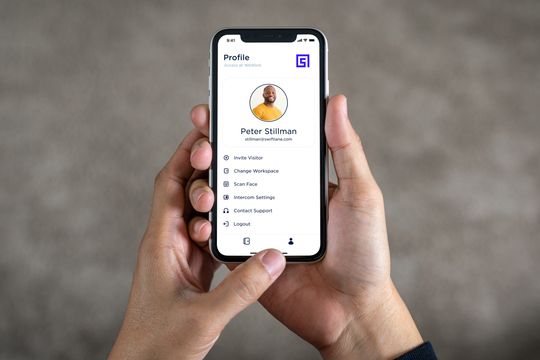
Have you ever wondered about the technology behind the call box you see near your apartment building or office complex? What exactly is a call box, and how does it contribute to the security and convenience of our daily lives? In this comprehensive guide, we’ll explore the world of call boxes, their different types, and how they work to keep our living and working environments secure.
Dive into the fascinating world of call boxes and discover how these communication devices have evolved over time, adapting to the changing needs of our modern society. From traditional telephone entry systems to advanced video intercoms, this guide will cover everything you need to know about call boxes and how to use them effectively.
Key Takeaways
- Call boxes provide secure communication between visitors and occupants in residential/commercial structures.
- Wired and wireless call box systems offer different advantages for installation, maintenance, stability & cost-effectiveness.
- Video intercoms are a modern alternative to traditional call boxes with enhanced security measures & integration capabilities.
Suggested Posts:
Apartment Call Box: A Complete Guide
Best Apartment Call Box Systems
Understanding Call Boxes
Call boxes, including VoIP call boxes, are communication devices installed in various properties, offering a secure means of contact between visitors and residents or staff. These devices play an essential role in managing visitor access, enhancing security, and providing a convenient way for residents and staff to communicate with visitors. For instance, John once received a call from an apartment call box from a man claiming to be a delivery person who could not provide any information. John declined him access, and the man quickly departed. John was aware that the apartment call box had assisted him in averting a potential security risk.
There are different types of call boxes, such as IP call boxes that utilize the internet to transmit communications, and gate call boxes used for secure entry management in gated properties like office campuses and residential communities. In this section, we’ll explore the definition of a call box, its common uses, and the various types available in the market.
Definition of a Call Box
A call box is a public telephone booth or a telephone in a box or case, typically mounted on a pole, which is utilized for reporting emergencies or making phone calls in the event of an emergency. Call boxes are frequently employed for emergency communication, access regulation, and communication between visitors and occupants in residential and commercial structures.
There are a few different ways to use call boxes, depending on the specific type and features available. The available call boxes include traditional telephone entry systems, video intercom systems, and access control devices. In order to utilize a call box, one must first locate the tenant in the directory, then enter the corresponding call box code, and finally communicate with the tenant.
Common Uses of Call Boxes
Call boxes are typically utilized in apartment buildings, offices, gated communities, and roadside emergency scenarios. They serve as a vital form of communication in emergency situations, allowing individuals to request assistance. Moreover, call boxes, also referred to as emergency phones or blue light phones, are utilized to enhance security in a variety of locations, including parking lots, college campuses, airports, hospitals, and construction sites.
Various call box technologies are available, such as:
- cellphone-based
- wireless
- wired CAT-5-based
- wired analog systems, including telephone line-based systems
Each type of call box has its advantages and disadvantages, depending on the specific application and location.
In the following sections, we will compare wired and wireless call box systems and discuss the different types of apartment call boxes.
Call Box Systems: Wired vs. Wireless
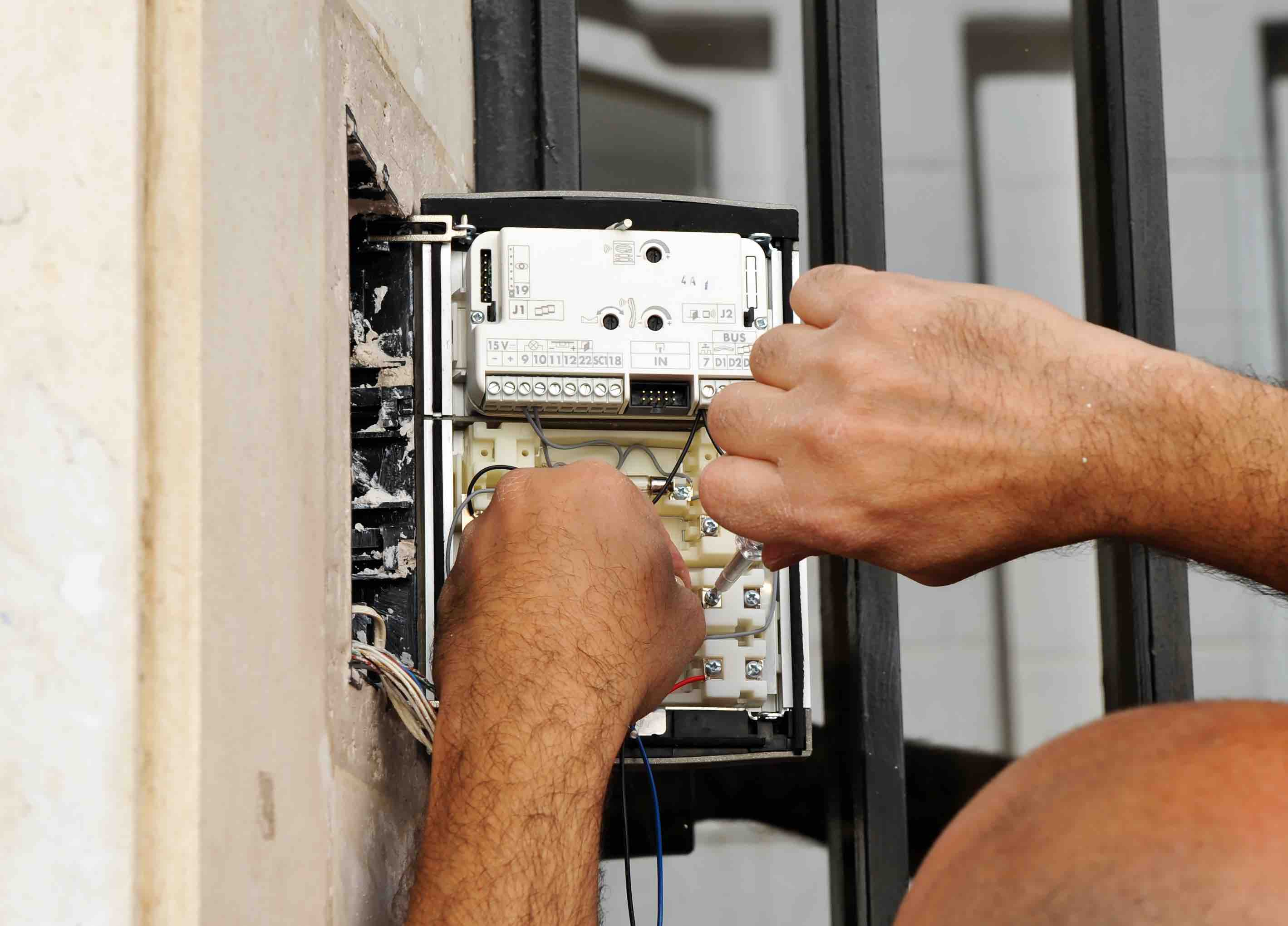
When it comes to call box systems, there are two primary categories: wired and wireless.
Wired IP call boxes utilize a CAT5/6 ethernet cord connected to a modem or switch to access the internet.
Wireless IP call boxes employ radio frequencies referred to as the spectrum. The term “spectrum” for wireless IP call boxes encompasses a range of technologies, such as:
- WiFi
- Bluetooth
- NFC
- Cellular technology
- Radio waves
Both wired and wireless call box systems have their advantages and disadvantages. Wired call box systems provide stability, reliability, and cost-effectiveness in terms of installation and maintenance. On the other hand, wireless call boxes offer an advantage in terms of flexibility and cost-effectiveness when it comes to installation and maintenance.
In the next sections, we will delve deeper into wired and wireless call box systems and their specific benefits and drawbacks.
Wired Call Boxes
A wired call box is a communication device that utilizes Voice over IP (VoIP) technology over CAT-5 Ethernet wire to connect to a wired network. It provides two-way voice communication and can be integrated into existing data networks or operate independently.
Furthermore, wired call boxes are often used for:
- Instant communication
- Emergency situations
- Security purposes
- Access control
They are powered continuously to ensure uninterrupted operation.
The benefits of wired call boxes include improved dependability and continuous operation. However, the drawbacks include greater installation and upkeep costs. A wired IP call box needs a CAT5/6 ethernet cable to make a connection with the modem or switch. This connection will provide internet access to the device.
Wireless Call Boxes
Wireless call boxes, on the other hand, offer enhanced versatility and cost-effectiveness in terms of installation and upkeep. A wireless call box is a communication device that facilitates wireless communication between a visitor and a resident or staff member, eliminating the need for a physical connection and enabling long-range outdoor communication.
While wireless call boxes do present some advantages, they may not include certain advanced features. In the next section, we will discuss the different types of apartment call boxes, including traditional telephone entry systems, video intercom systems, and access control devices.
Types of Apartment Call Boxes
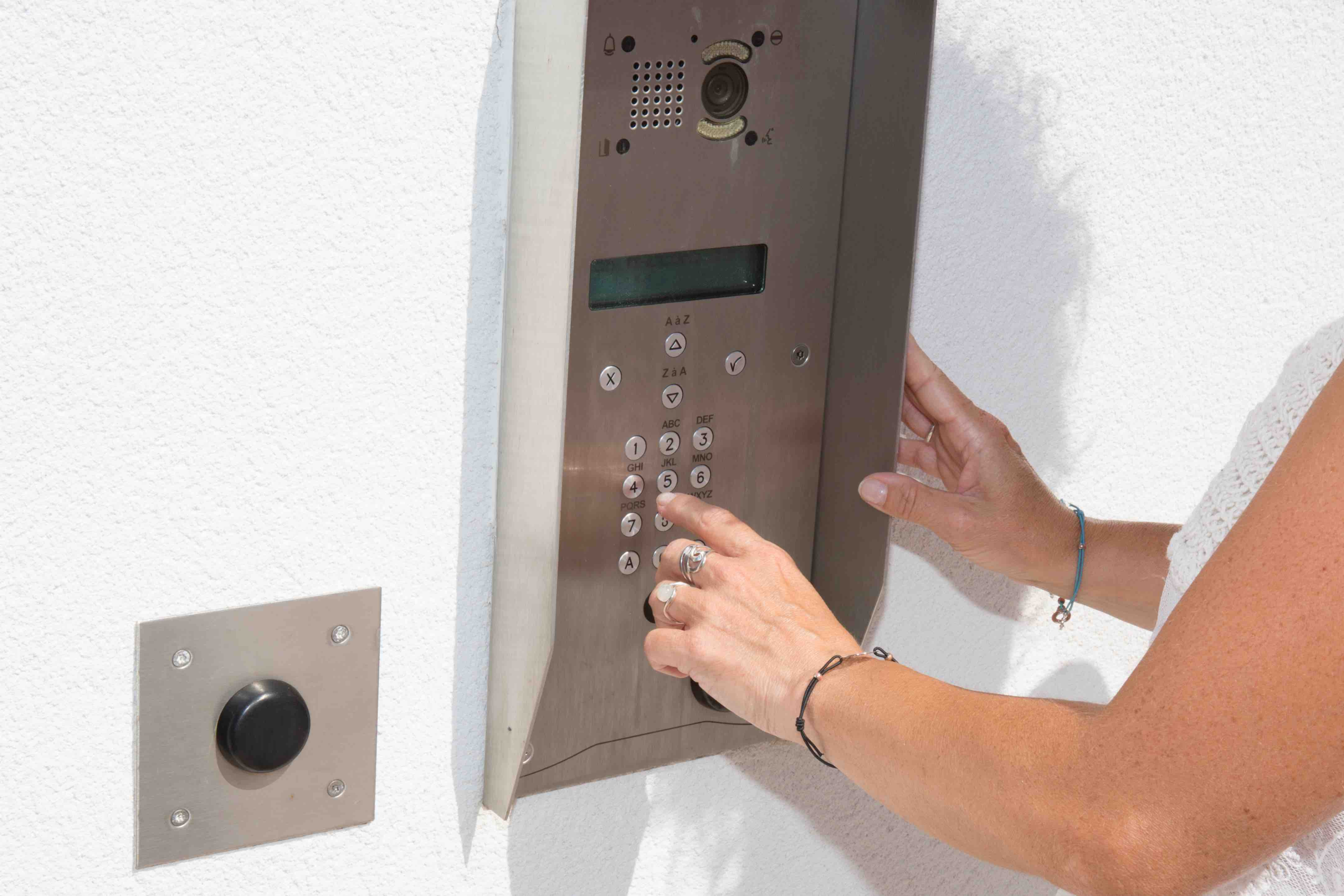
Apartment call boxes come in various forms to cater to the diverse needs of residential and commercial properties. These include traditional telephone entry systems, video intercom systems, and access control devices. Each type serves a distinct purpose and offers unique advantages.
In the following subsections, we will explore each type in detail and discuss their specific features and benefits.
Understanding the different types of apartment call boxes can help you make informed decisions when choosing the right call box system for your property. Whether you prioritize simplicity, advanced features, or a combination of both, there is a call box system that will meet your needs.
Traditional Telephone Entry Systems
Traditional telephone entry systems:
- Use a dedicated phone line to connect visitors with residents
- Visitors can dial the pre-programmed landline or cell phone number to request entry
- Residents can grant or deny access
- Offer an economical and straightforward installation process
- Provide basic communication and access control capabilities
However, traditional telephone entry systems can be unreliable and challenging to maintain. An alternative would be video intercoms, which offer more reliable communication and access control. In the next section, we will discuss video intercom systems and their benefits.
Video Intercom Systems
Video intercom systems are a more advanced type of call box that utilizes a video camera for communication, allowing the resident to confirm the visitor’s identity. When visitors request access to a property, the intercom sends both video and audio signals to a monitor or smartphone. They provide the individual indoors with the ability to both view and communicate with the visitor. This type of system provides convenience and safety to residential and commercial buildings.
The benefits of video intercom systems include:
- Improved security and convenience by enabling residents to view and communicate with visitors before granting access
- Allowing the resident to authenticate the identity of the visitor and grant access without having to open the door
- Creating a record of who has accessed the property, which can be utilized for security purposes.
Access Control Devices
Access control devices are devices utilized to regulate entrance to a building or area. They can be employed in conjunction with call boxes to provide heightened security. An access control device uses various technologies, such as keycards, PIN codes, or biometrics, to manage entry into a building.
These devices offer enhanced security and safety, as well as user convenience. Additionally, they can be utilized to track and monitor access to a facility or area. However, the installation and upkeep of access control devices can be costly, and they may not be appropriate for all types of structures or locations.
How to Use a Call Box
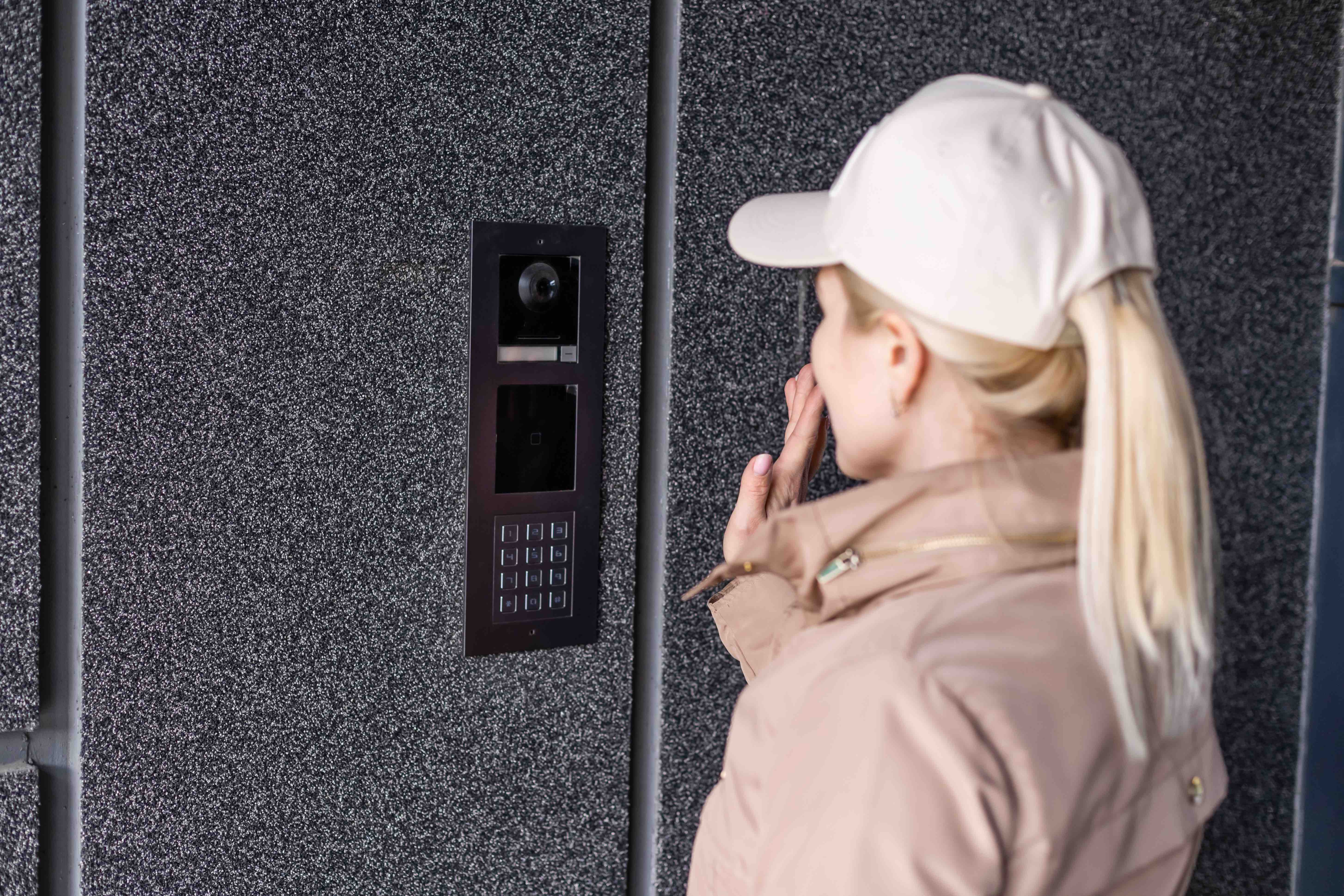
Using a call box may seem daunting at first, but most call boxes are designed to be user-friendly and straightforward. In this section, we will provide a step-by-step guide on how to use a call box, from finding the tenant in the directory to communicating with them. By following these simple steps, you will be able to use a call box effectively and confidently.
Whether you are a resident, a visitor, or a property manager, understanding how to use a call box is essential for maintaining security and convenience in your living or working environment. Let’s explore the steps required to use a call box.
Finding the Tenant in the Directory
To locate a tenant in a call box directory, you can use the call box to dial the resident’s phone number or select their name from a list in the directory. This step is crucial, as it ensures that you are contacting the correct person and maintaining the security of the building.
Once you have found the tenant in the directory, you can proceed to the next step, which involves entering the call box code.
Entering the Call Box Code
After locating the tenant in the directory, enter the unique call box code assigned to the tenant. Entering this code triggers a phone call or video call to the tenant’s phone, allowing you to communicate with them and request access to the property.
Once you have entered the code, wait for the tenant to respond to your call and grant or deny access as necessary.
Communicating with the Tenant
When the tenant answers your call, speak clearly and concisely into the call box microphone to request access or provide any necessary information. If the tenant grants access, they will provide you with instructions on how to enter the property.
Remember to always be polite and respectful when communicating with the tenant, as this ensures a smooth and pleasant experience for both parties.
Limitations and Alternatives to Call Boxes
While traditional call boxes have served their purpose in providing security and convenience, they come with certain limitations. These limitations include:
- Lack of video calling capability
- Deterioration over time
- Technological obsolescence
- Reliance on traditional telephone lines
In this section, we will discuss the challenges associated with traditional call boxes and explore the benefits of modern alternatives, such as video intercoms. By understanding the limitations of traditional call boxes, property owners and managers can make informed decisions when choosing a call box system that meets their needs and offers the best possible security and convenience for their residents and visitors.
Challenges with Traditional Call Boxes
Traditional call boxes have several limitations.
- Lack of video calling capability, making it difficult for residents to verify the identity of visitors
- Prone to vandalism and prank calls due to their easily accessible nature
- Not accessible for persons with disabilities, as they often require the user to stand in order to use them
Other challenges with traditional call boxes include:
- The potential for motorists to leave the scene before help arrives
- Encasement damage over time
- Rapid technological obsolescence
- Dependence on traditional telephone lines
These limitations make traditional call boxes less appealing for property owners and managers who are looking for a more advanced and secure solution for their properties.
Video Intercoms: A Modern Solution
Video intercoms offer a more advanced and secure solution for property access. They offer features such as live video, mobile app integration, and cloud-based updates. These systems allow residents to see and speak with visitors before granting access, providing an additional layer of security and convenience. Video intercoms also create a record of who has accessed the property, which can be utilized for security purposes.
In comparison to traditional call boxes, video intercoms provide a more reliable and feature-rich experience for both residents and visitors. If you are considering upgrading your call box system or installing a new one, video intercoms offer the following benefits:
- A modern and secure solution
- Enhanced communication and interaction
- Improved access control and security measures
- Integration with other smart home devices and systems
- Remote access and monitoring capabilities
Video intercoms can effectively meet the needs of your property and provide a more convenient and efficient experience for everyone involved.
Check out Swiftlane’s Modern Video Intercom Solution:
Summary
Throughout this comprehensive guide, we have explored the world of call boxes, their various types, and how they work to keep our living and working environments secure. From traditional telephone entry systems to advanced video intercoms, we have discussed the benefits and drawbacks of each type of call box and provided a step-by-step guide on how to use them effectively.
As you consider the security and access control needs of your property, remember that choosing the right call box system can make all the difference in ensuring a safe and convenient environment for residents and visitors alike. With modern alternatives like video intercoms, you can provide an advanced and secure solution that meets the demands of today’s fast-paced world.
Frequently Asked Questions
What is a call box used for?
A call box is a communication device that connects two points, often used on highways to contact emergency services or central dispatch stations. They are also used as an access control device for properties, allowing visitors to contact and request access from someone in the building.
What is in a call box?
A call box typically includes a keypad or touch screen access control device for visitors to enter the resident’s phone number or select their name from a list. This is typically located near the entrance of a building.
Do call boxes still exist?
Call boxes still exist in some areas, but with many people having cell phones, they are not seen as often.
Motorist aid call boxes are also common at regular intervals along highways and rapid transit lines. They provide a way to contact a control center in case of an emergency.
How do wired and wireless call box systems differ?
Wired call boxes require a physical connection for operation, whereas wireless call boxes can be installed without cables, providing flexibility and cost savings.
What are the advantages of video intercom systems over traditional telephone entry systems?
Video intercom systems provide enhanced security and convenience than telephone entry systems. They allow residents to see and talk with visitors before granting access.
This increased security and convenience makes video intercom systems a great choice for any residential building. They are easy to install and maintain, and can be used to control access to multiple entry points.
Video intercom systems are also cost-effective.
Upgrade Your Building Security
Get in touch with a Swiftlane specialist for more information on the best access control and video intercom solution for your building.

